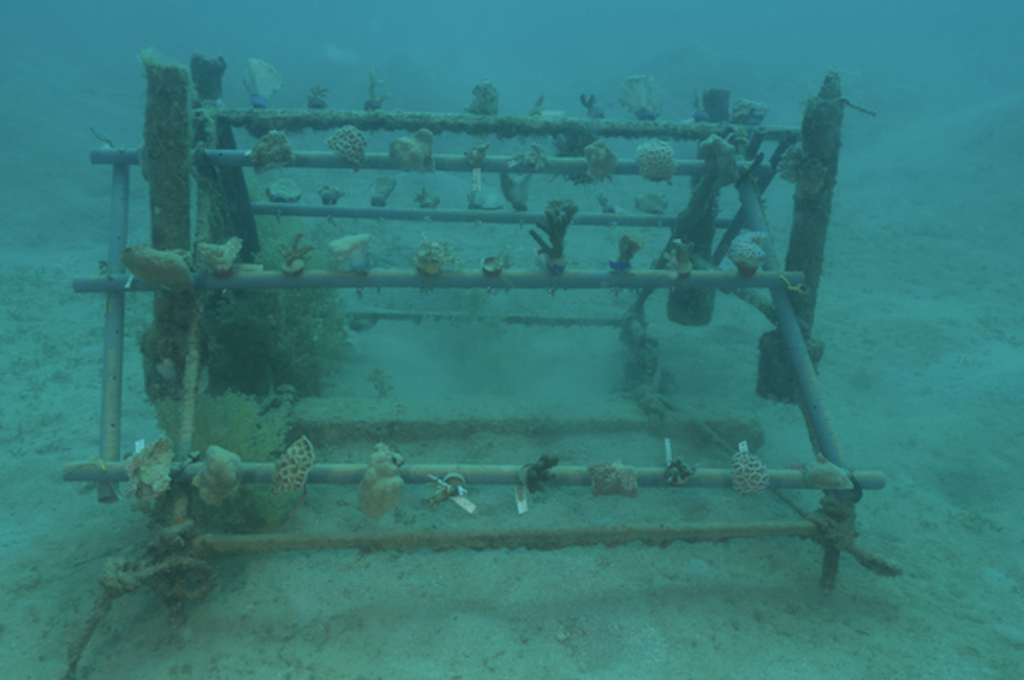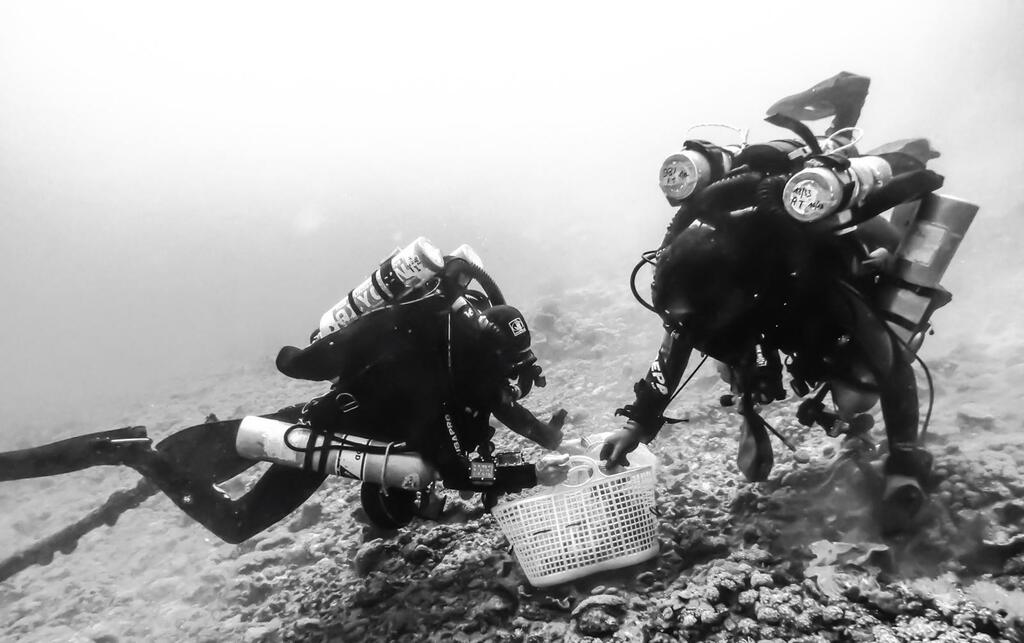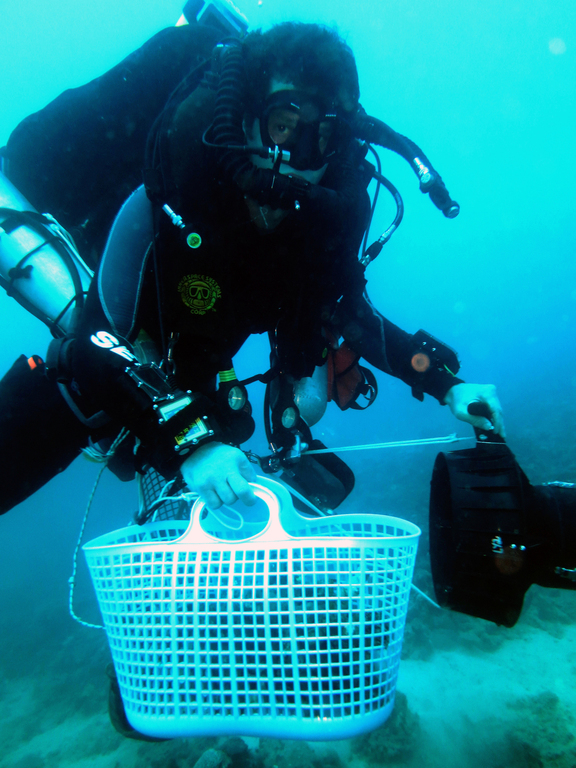Behind the science:
Reciprocal-transplantation between shallow and mesophotic stony corals
2020, September 11
Posted by Veronica Radice
Fields
Physiology
Disturbances
Ecology
Long-term monitoring
Focusgroups
Scleractinia (Hard Corals)
Symbiodinium (zooxanthellae)
Locations
Israel - Red Sea
Platforms
Rebreather
“Cross-transplantation survivorship and photobiological acclimatization of depth-generalist corals”
What was the most challenging aspect of your study (can be anything from field, lab to analysis)?
There were a few aspects that were pretty challenging in this study. First, we had to collect four colonies from five species, from both shallow (5–10 m) and mesophotic (45 m) depths. It was long and challenging (mostly heavy) to carry twenty colonies from 45 meters! Thankfully we used closed-circuit rebreathers, otherwise it would have taken us forever! The second step was to fragment the colonies and to safely place them back at both sites and depths. We can only assume that for the corals, it was very challenging to face new and different conditions, and on top of that, they also faced the effects of severe sediment drift caused by desert flash-floods during the study (see Photo 3). Luckily most of them had survived.
What was the most memorable moment in undertaking this study?
The most memorable moment was to find out that after the severe flash-flood event, most of the fragments had survived. For a couple of days, we were sure that our hard and long work went down the drain, beyond the grief of losing the corals for nothing. Fortunately, this did not happen and we could publish the results of this study and show the potential consequences of natural and unnatural processes (e.g., high sedimentation and/or nutrient concentrations due to nearshore anthropogenic activities) on the coral reef.
What was your favorite research site in this study and why?
My favorite research site in this study is the northern site, the - 'Dekel' site (see Photo 6). Although its shallow part (0-20 m) constitutes a patchy and mostly sandy reef, there is a thriving and complex reef from ~30 down to 60 meters. This unique reef is home to one of the most beautiful and abundant coral species, Euphyllia paradivisa, which can be found mostly at this site, probably due to an array of conditions enabling it to thrive there.
Other than your co-authors, with whom would you like to share credit for this work?
We would like to acknowledge Yossi Loya’s lab members for fieldwork assistance, mostly for the retrieving of the pyramidal structures part which involved a complicated dive. The Interuniversity Institute for Marine Sciences in Eilat (IUI) for making their facilities available to us and for their supply of the diving equipment which without it, this study could not have been carried out.
 The shallow experimental setup at 10 m depth in front of Dekel beach after a flood event.
(C) Raz Tamir
[CC BY-NC 4.0]
The shallow experimental setup at 10 m depth in front of Dekel beach after a flood event.
(C) Raz Tamir
[CC BY-NC 4.0]
 Raz Tamir and Yoni Shaked collecting corals in front of the IUI at 45 m depth.
(C) Netanel Kramer
[CC BY-NC 4.0]
Raz Tamir and Yoni Shaked collecting corals in front of the IUI at 45 m depth.
(C) Netanel Kramer
[CC BY-NC 4.0]
Any important lessons learned (through mistakes, experience or methodological advances)?
The biggest lesson we have learned from this study is the importance of frequently monitoring coral survival throughout the year and not just at the end of the study, after one year. More continuous monitoring would have provided us with broader information about survivorship, and perhaps, the events that led to the death of specific fragments. In the future we could add additional observations during the year - the corals have been in the water at different sites and depth and as a result - at different conditions such as variable light. As such, we could have detected the specific timing when specific species did not survive, for example, after a flood event or after seasonal temperature fluctuation. In addition, different types of measurements such as PAM (photosynthesis performance) are highly recommended and could have lead to additional knowledge regarding the photoacclimation at a 'real-time' scale throughout the year (i.e., how much time does it take for different species to acclimate to changes in light regime / environmental conditions).
Can we expect any follow-up on this work?
Our lab continually aims to understand the effect of the different environmental conditions along the reef slope, as well as the effects of wide (climate change) and local events (floods and pollution) on the deep-reef species and the reef in general. We hope that further studies examining the adaptability of shallow, 'generalist', and deep species, which are the focus of our group, will offer scientific and practical tools for the protection and conservation of the deep-reef environment and emphasize its ecological importance.
 Raz Tamir collecting corals in front of Dekel beach.
(C) Gal Eyal
[CC BY-NC 4.0]
Raz Tamir collecting corals in front of Dekel beach.
(C) Gal Eyal
[CC BY-NC 4.0]
Featured article:
|
|
Reciprocal-transplantation between shallow and mesophotic stony corals | article Tamir R, Ben-Zvi O, Eyal G, Kramer N, Loya Y (2020) Mar Environ Res 161:105035 |
|